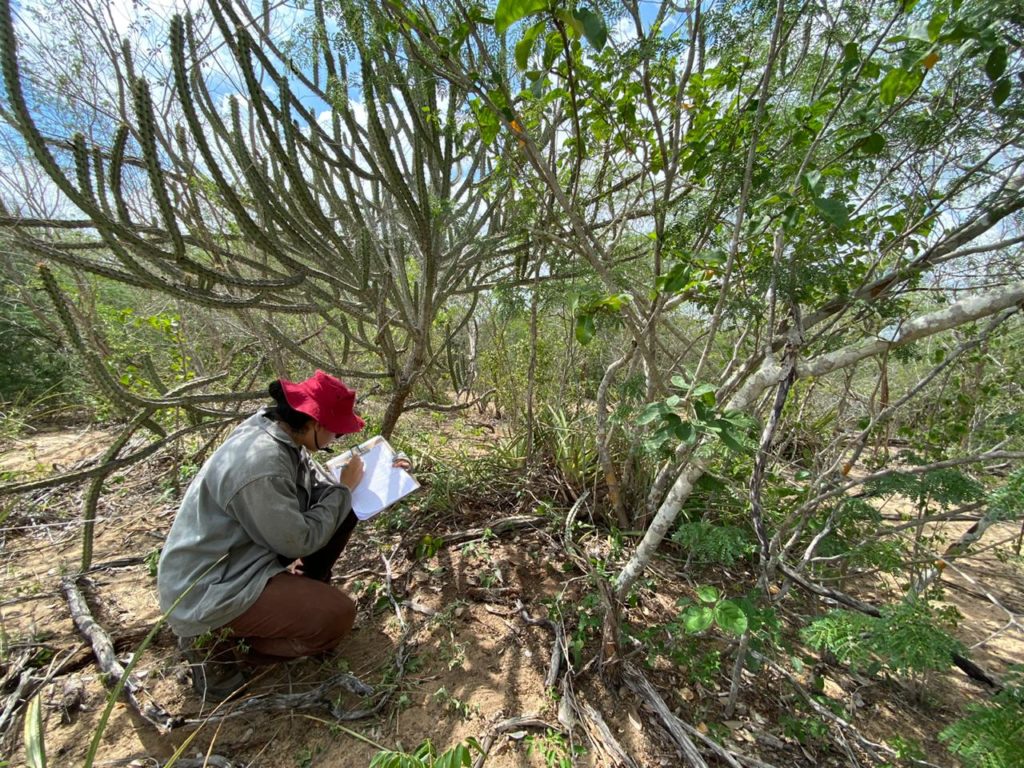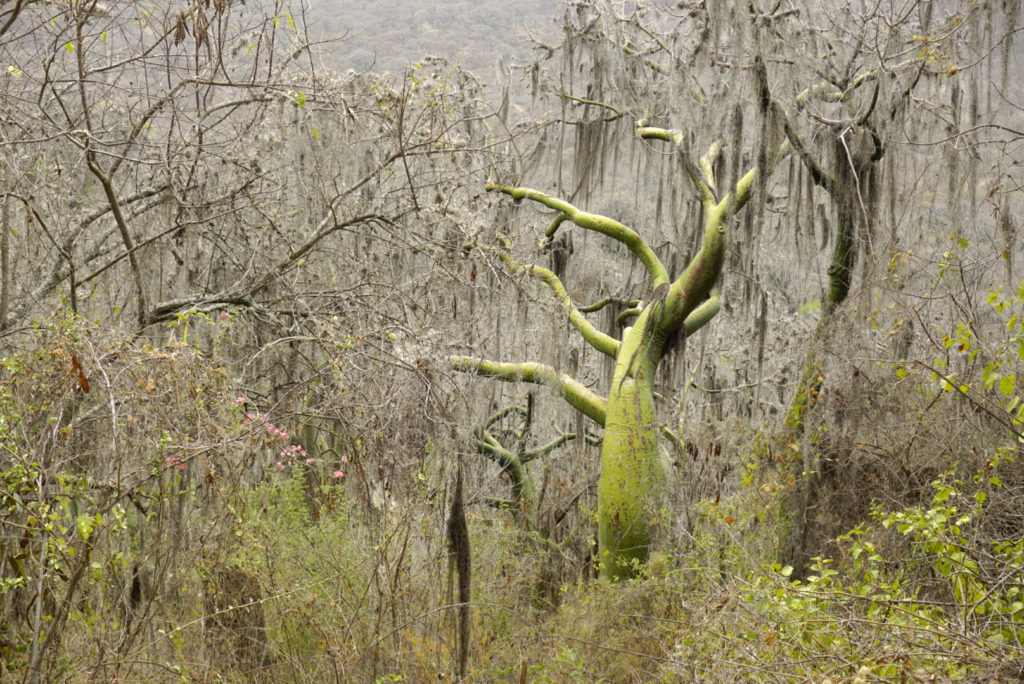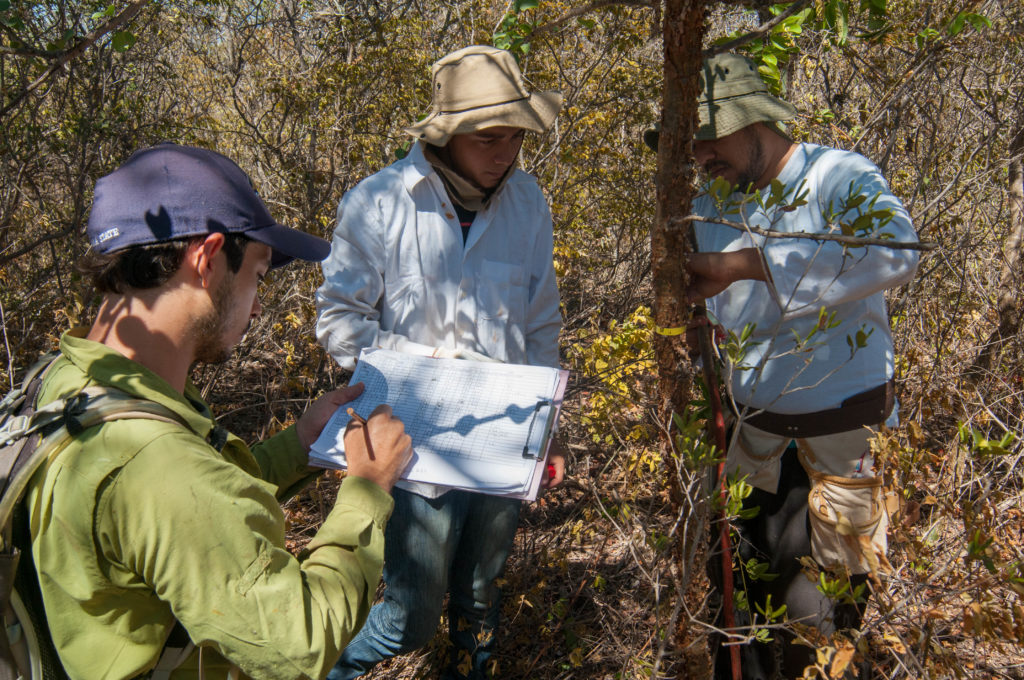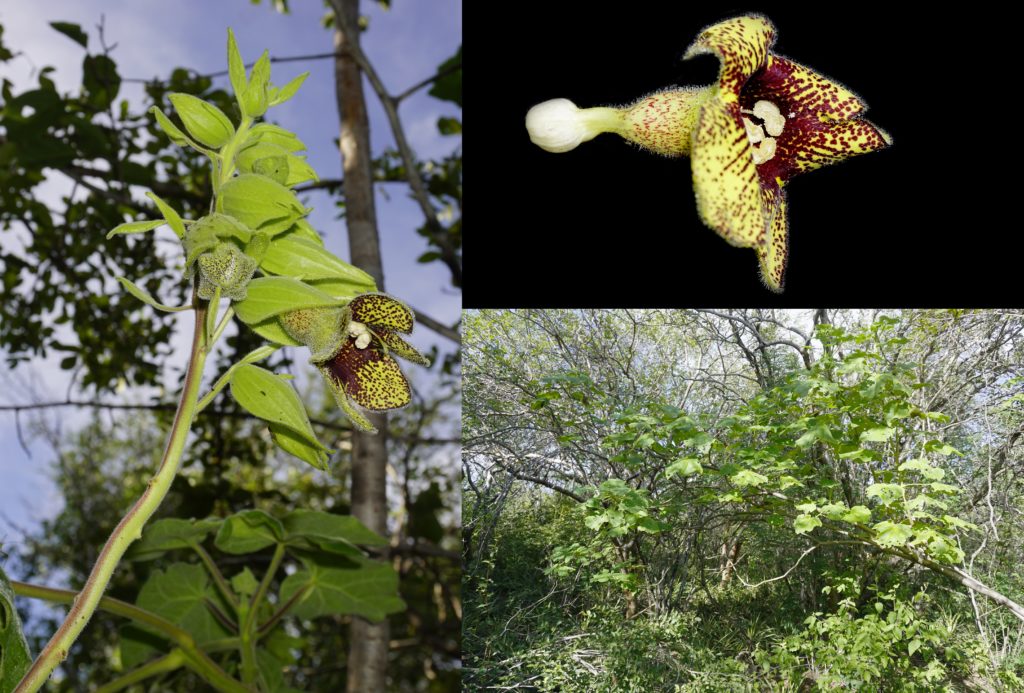
When most people think of the tropics, they think of lush, green rain forests filled with splashes of colour and unearthly sounds. This is only a part of the story. More than half of the tropics are too dry to support moist forest and are instead home to dry forest and savanna. Dry forests have often been ignored by scientists, conservationists, and the public alike, and they are now known as “forgotten forests”.
Here at RBGE, we have a wealth of expertise in the botany of dry forests, particularly in South America. Many of the three million collections in the RBGE herbarium are from these habitats, and we are currently involved in projects to describe the floras of dry forests in Brazil and Peru. As well as our exploratory work, a large part of RBGE’s work is in understanding the health of tropical habitats.

One of the most important methods we have at our disposal to understand the health of forests is to build and monitor permanent plots. These are areas of forest where every single tree is tagged, measured, and identified. This sounds simple but is a slow and often difficult process. Tropical forests are not easy places to work, and it can take a team of four people upwards of a week to measure a single plot, half hectare plot.
So, is it it worth it? Absolutely! By remeasuring the same areas of forest every few years, we can learn a lot about these ecosystems. Are more trees dying than being recruited? Is the species composition of the forest changing? Are forests releasing or capturing carbon? Data from plots can answer these questions and many more of importance, proving the data needed for everything from local conservation planning to building global models of carbon dynamics.

Until now, most permanent plots have been established in rain forests. We know far less about the health of dry forests. This is a huge omission, as the world’s tropics are predicted to become hotter and drier as climate change progresses. We need to understand how those ecosystems already adapted to hot and dry environment will react to these changes.
The lack of plots in dry forests is in part because setting up a permanent plot in a dry forest is much more complicated than in a rain forest. The trees in dry forests are usually much smaller, often spinier, and have many more branches at ground level than trees in rain forests. In short, they are a lot more difficult to measure, and there is no standard way of measuring them.
Today RBGE has led the publication of a new protocol for permanent forest plots in dry forests, published in the journal Plants People Planet and funded by the Natural Environment Research Council (NERC). This is the result of over a decade of field experience in Latin American dry forests and a new collaboration between the DryFlor, RAINFOR, and NordEste networks.
With this new protocol, we hope many of the next generation of permanent forest plots will be established in tropical dry forests. Hopefully, they will not be forgotten forests for much longer.

